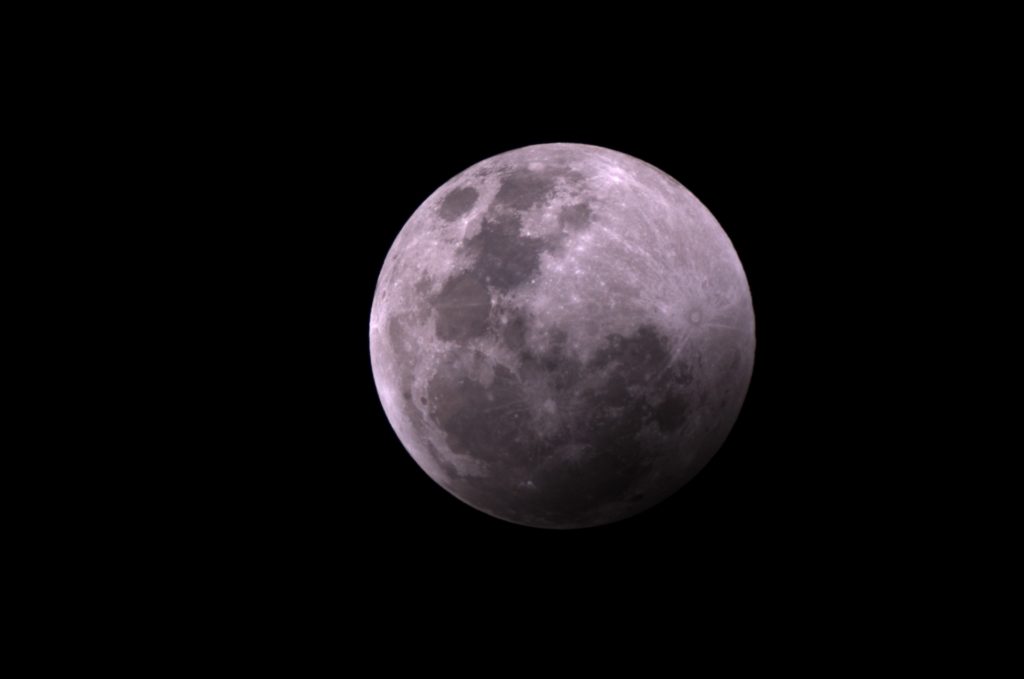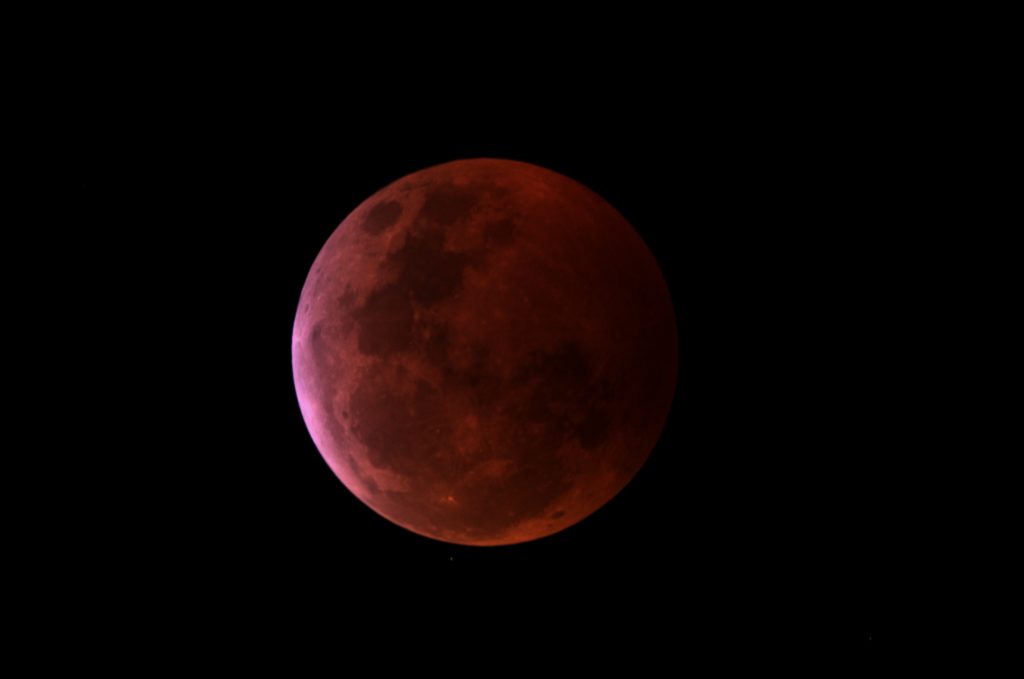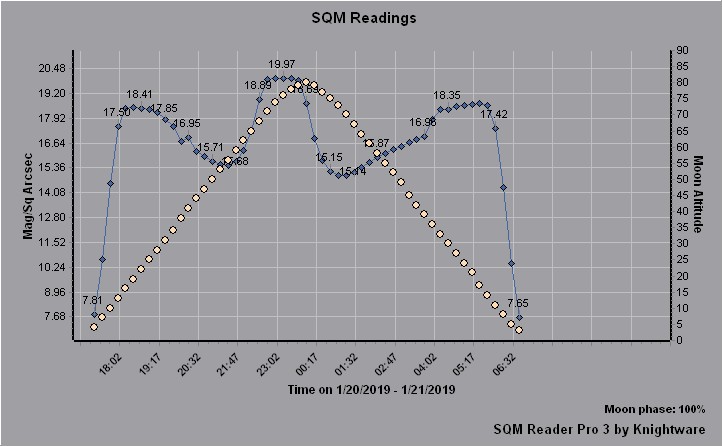Jan 212019
I set up early Sunday afternoon to make sure I had everything I needed to record the eclipse on hand and in working order. I’ve learned my lesson trying to set up ‘just-in-time” for an astronomical event. Unfortunately, once it got dark it became apparent my daytime polar alignment using a compass was very, very wrong. But, I was able to bring the Moon into the camera FOV and kept up with the alignment offset by jogging the mount in between exposures.
This image was taken about 7 minutes prior to the Moon entering the shadow’s umbra. Visually, the Moon was just starting to show an obvious darkening along one side.
This shot was taken as the Moon was in the deepest part of the shadow. The color gradient shows the Moon was not passing directly through the center of the shadow but offset towards one side.
I was anticipating seeing some stars when the Moon was at its dimmest. In fact, under extreme stretching, there are dozens of stars visible in the image. The detail section below shows the two stars that are the easiest to see – left to right: HIP 40270 and HIP 40327, both in the constellation Cancer. They are magnitudes 7.84 and 8.38 respectively. The dimmest star in the field was well below magnitude 10.5. The polar alignment error is obvious in how much the stars are smeared with only a 5.5 second exposure.
The mount I was using is a German Equatorial Mount (GEM). That design cannot track from horizon to horizon without hitting itself or the scope hitting the tripod. Because of this, when pointed vertically, the mount must flip its orientation from one side to the other. This is know as a meridian flip. Luckily, by the time it became necessary to flip, the eclipse was starting to wind down. Due to the poor polar alignment, once the mount flipped I could not bring the Moon back into the camera FOV quickly enough to continue the series of timed photos that I had planned. I also noticed some dew had started to form on the equipment so I used that as my excuse to wrap up the session and take the equipment into the nice, warm observatory office.
This morning, as usual, I took a look at the previous night’s SQM trend chart. It shows the measured brightness of the sky above the PTO. This surprised me some. It shouldn’t have, I should have anticipated the readings but I didn’t. The readings show the brightness of the sky. The higher the number, the darker the sky. The chart also shows the height of the Moon as small yellow circles. As you can see, as the Moon climbed higher in the sky, the brighter the sky became. That is until the Earth’s shadow reduced the light getting to the Moon. In fact, the chart shows the darkest part of the entire night was the time during the eclipse.



